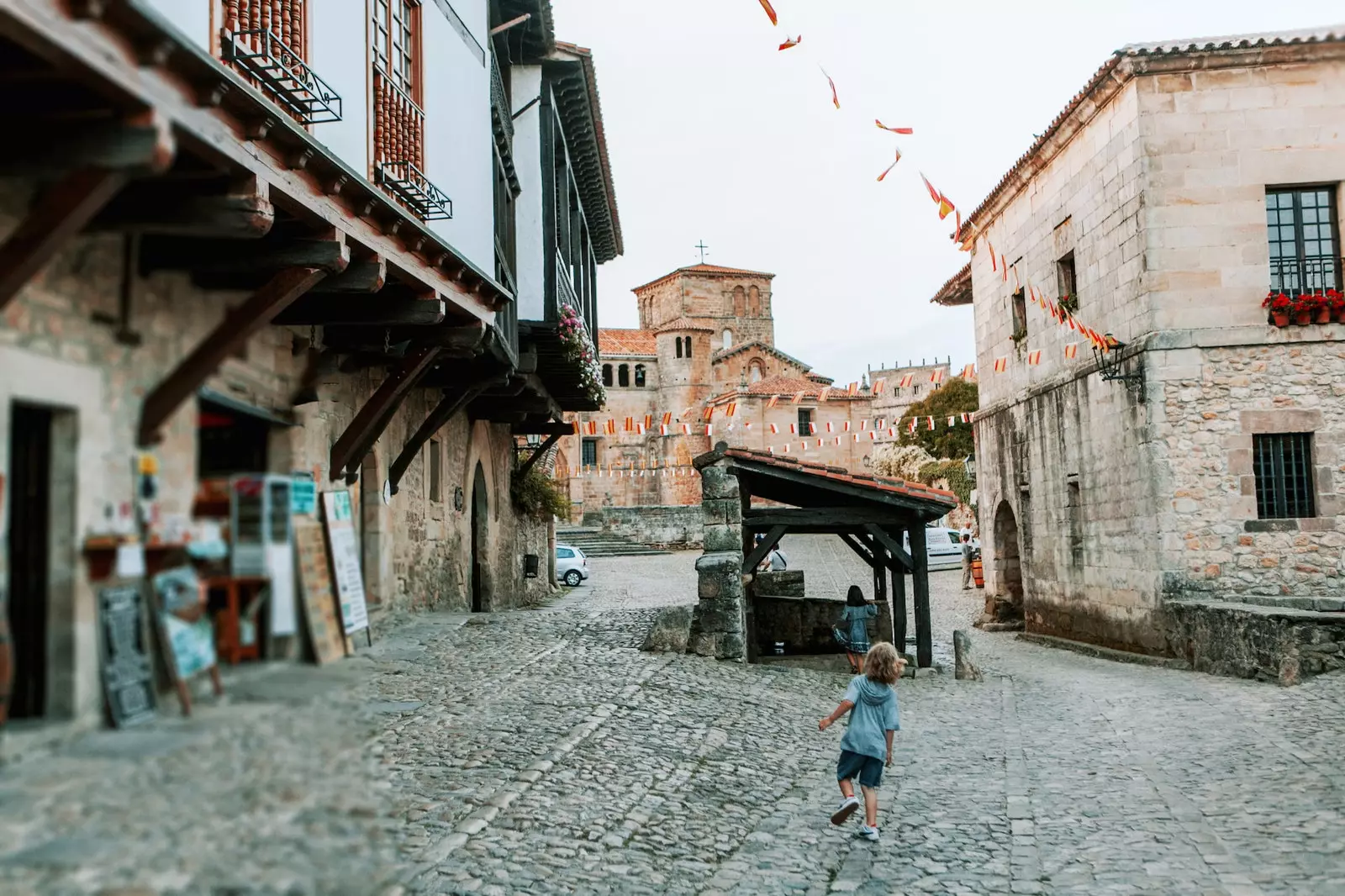
Santillana del Mar becomes the Capital of Rural Tourism 2019
A total of 9,720 votes , a fifth of the total, has gone to Santillana del Mar , which from today is crowned as the Capital of Rural Tourism 2019.
This initiative, promoted by the portal EscapadaRural.com in its third edition, it has gained special interest given the high involvement of the candidate towns and the incipient tourist interest that we are having (finally) in the most rural Spain.
And it is not for less, because that part of Spain that refuses to be forgotten has the opportunity to show off. And he has done it in style.
Special mention must be made to Cangas de Narcea or Parada de Sil on the Ribeira Sacra , who have been in second and third place respectively.
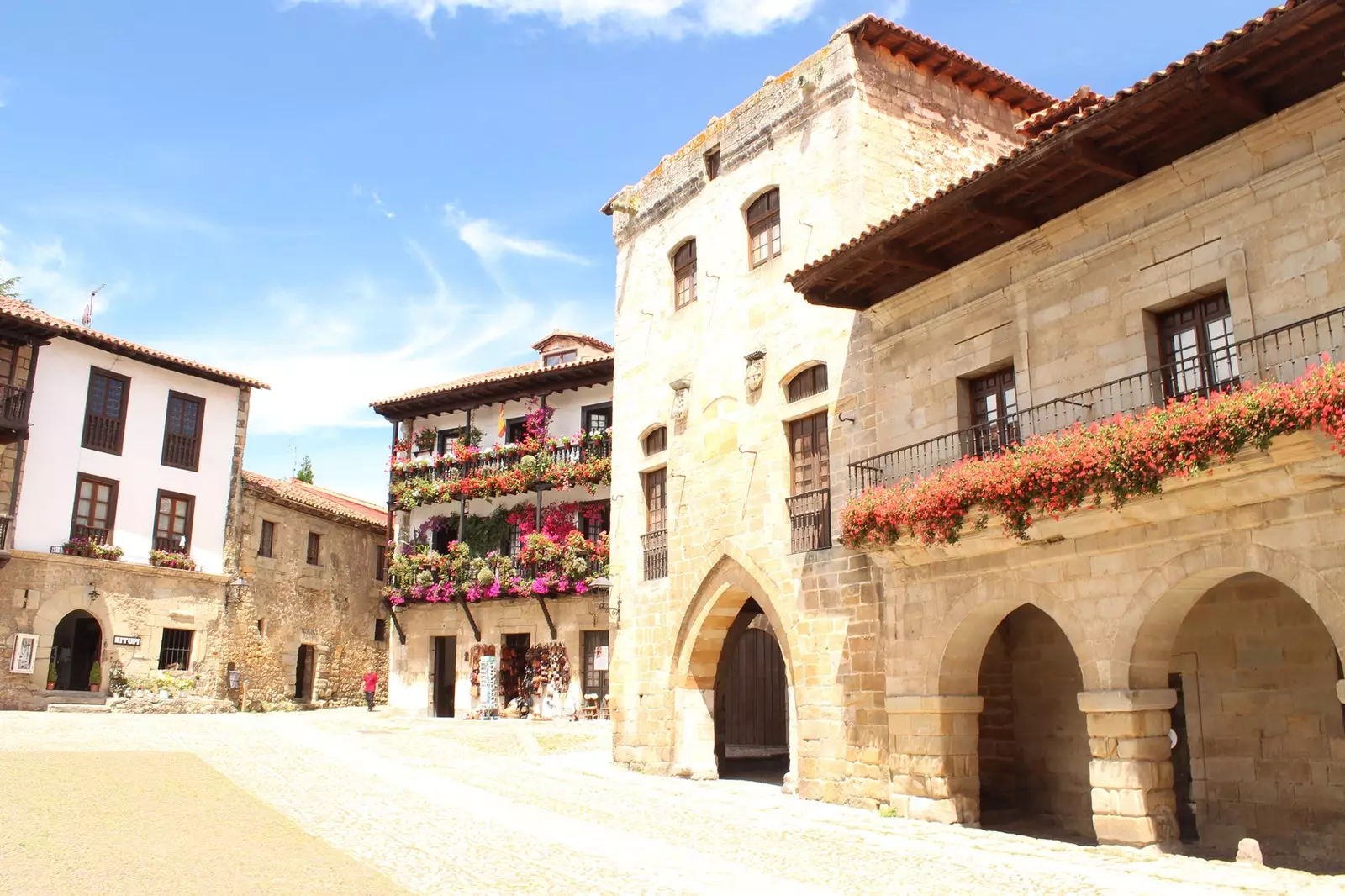
9,720 votes have made Santillana del Mar the Rural Capital of 2019
But the cat to the water has been taken by Santillana del Mar, the Villa of the three lies, the one that guards the caves of Altamira and that has many centuries of history behind it.
Don't you know Santillana del Mar yet? We tell you some things you should know.
TURE SHEET: LOG IN FOUR STEPS
Planning a visit to Santillana del Mar is complicated given the enormous number of monuments and places of interest What does the village have? The best recommendation is to go to the Tourist Office, but if you are one of those who ventures on your own, we give you four clues:
1. The Collegiate Church of Santa Juliana . It is a World Heritage Site and has been considered as National Monument since 1889 no more no less. The town owes its name to this monument, which was once a monastery built in the 12th century by Augustinian monks who deposited the relics of the martyr Saint Juliana.
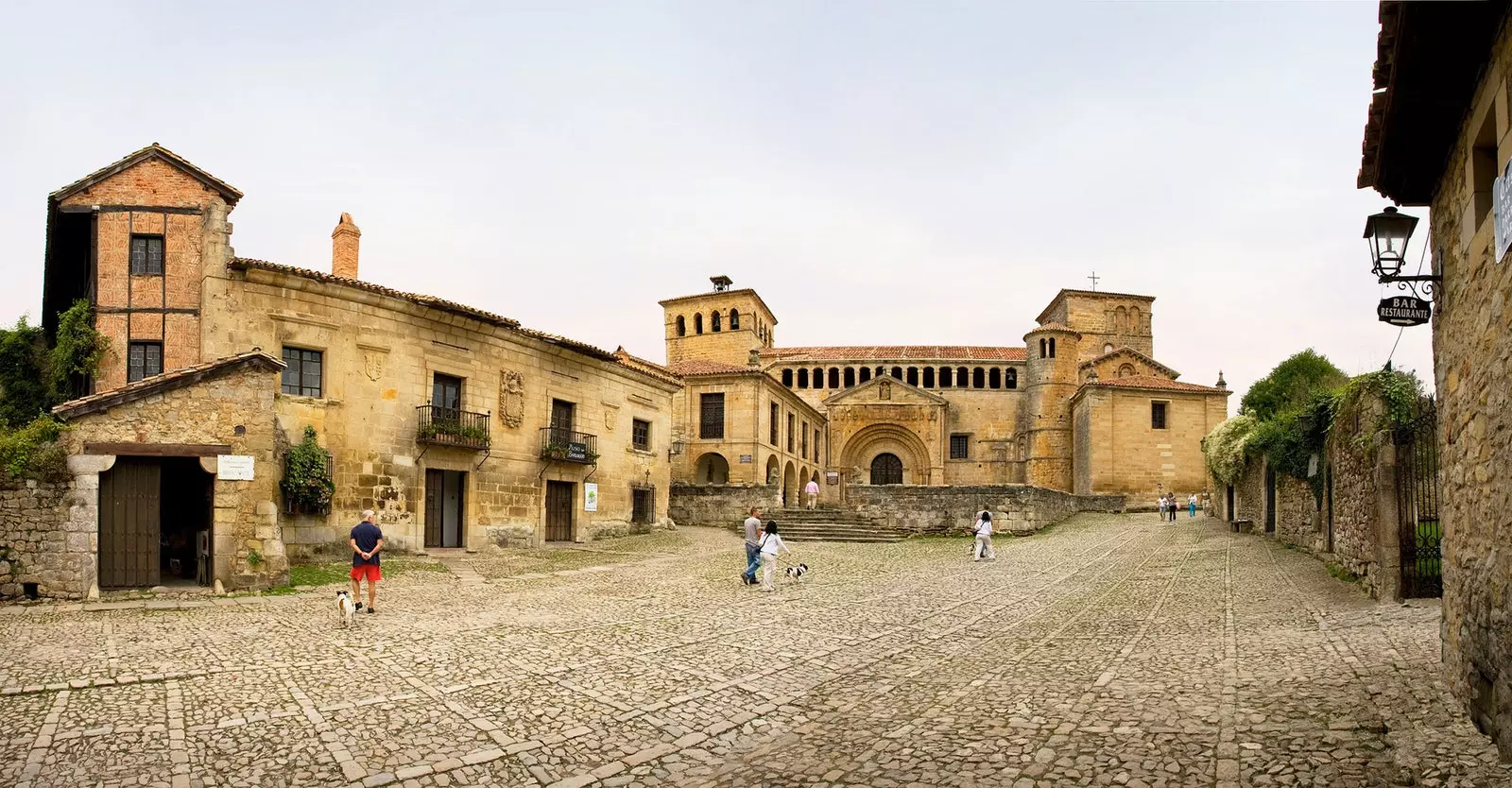
The Collegiate Church of Santa Juliana in Santillana del Mar
These monks converted the Collegiate Church into the most important monument in Cantabria , a magnificent three-nave church with a spectacular cloister made up of double columns and semicircular arches, faithful to the Romanesque style (although with some variation) .
In that same cloister is where the tombs of the Polanco family. The Gothic style can be seen in its main altarpiece, which dates from the end of the 15th century, and which rests under some ribbed vaults in an incredible state of conservation.
two. Altamira Cave. Little presentation is needed for the one that has been considered as the Paleolithic Sistine Chapel and that is part of the DNA of Santillana del Mar almost as much as the fresh air of Cantabria.
The famous cave was discovered in 1879 and almost since then it has been (and is) the object of study by paleontologists and historians. In fact, the state of conservation of the cave art that it houses in its interior has earned it to become in 1985 in World Heritage.
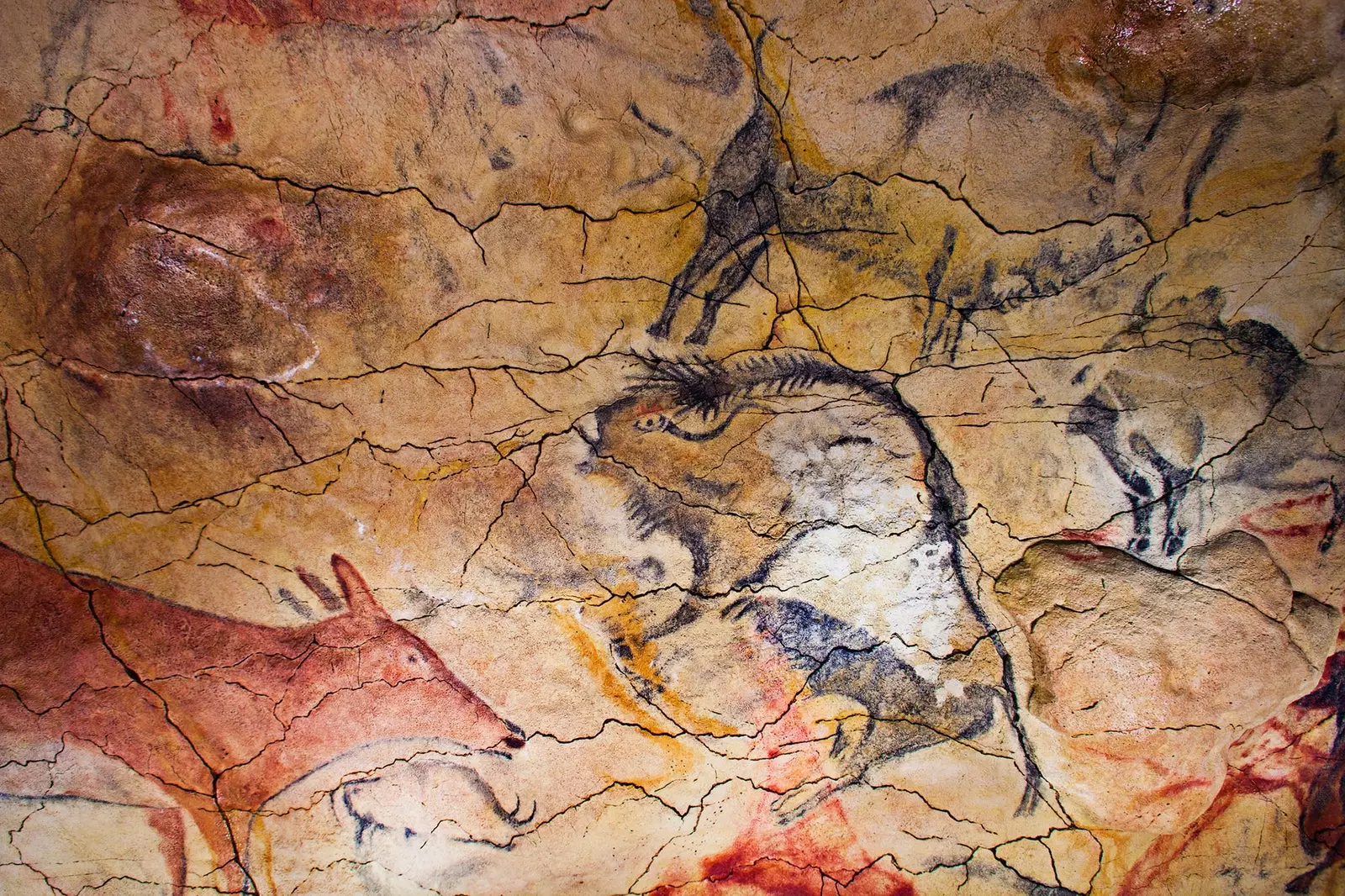
Altamira
The paintings reflect representations of hunting and the daily life of men who existed more than fifteen thousand years ago, although it is believed that the cave was inhabited more than 20,000 years. The visit is not easy, since only five people can access the cave per day and with special clothing.
3. Its medieval towers. Santillana del Mar has a very important medieval footprint. Proof of this are the Merino and Don Borja towers , of style Gothic and military character, or the Velarde's tower , all very well preserved.
It is very important to admire the House of Leonor de la Vega , with Renaissance overtones and whose origin is linked to the mother of the Marques de Santillana.
Four. Its Renaissance houses and palaces. The Renaissance and the Baroque are other protagonists of the art festival in Santillana del Mar. The richness that the conquest of the new world allowed to bring to Santillana del Mar enough power to build magnificent houses such as the Hombrones or the Bustamante.
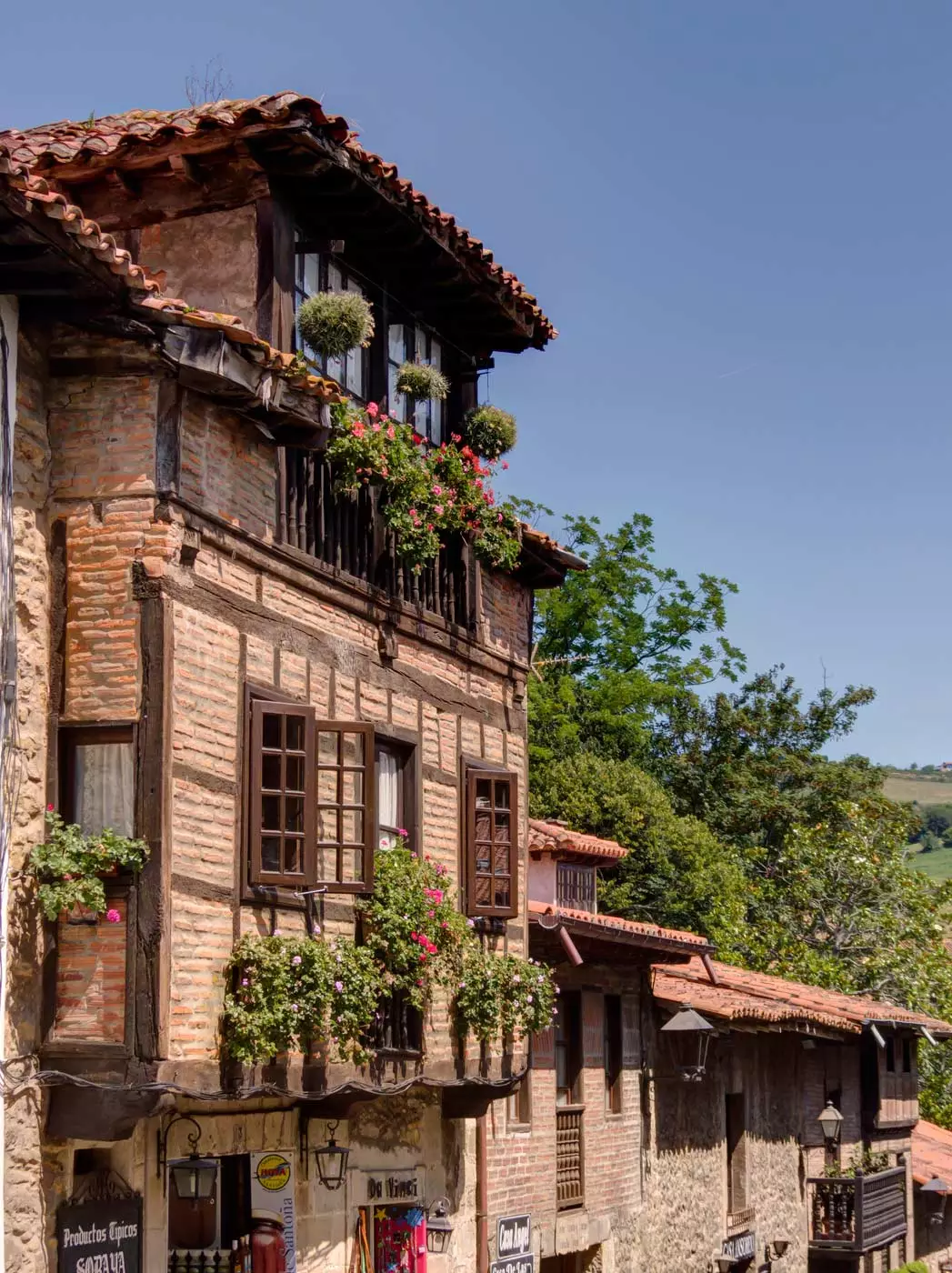
Santillana del Mar, in Cantabria
The Dominican Order played an important role in Santillana, settling in the Palacio de las Arenas and transforming the predominant Romanesque into a liveliest renaissance style . Other Renaissance buildings that can be visited are the ** Gil Blas National Parador or the Town Hall .**
EAT, DRINK, SLEEP
One of the most fabulous things about Santillana del Mar is that it is located in a almost privileged location . Its proximity to Cantabrian Sea on the one hand and the mountain on the other allows for an amalgamation of flavors that encompasses both mountain and seafood cuisine.
As a representative of seafood cuisine, it is important to search the menu for a good sorropotun . East typical dish of Cantabrian cuisine It consists of a cauldron of Cantabrian tuna that has been stewed with potatoes, peppers and onion, served in a clay pot and very hot. Also from the sea are the magans with onions and baked swordfish.
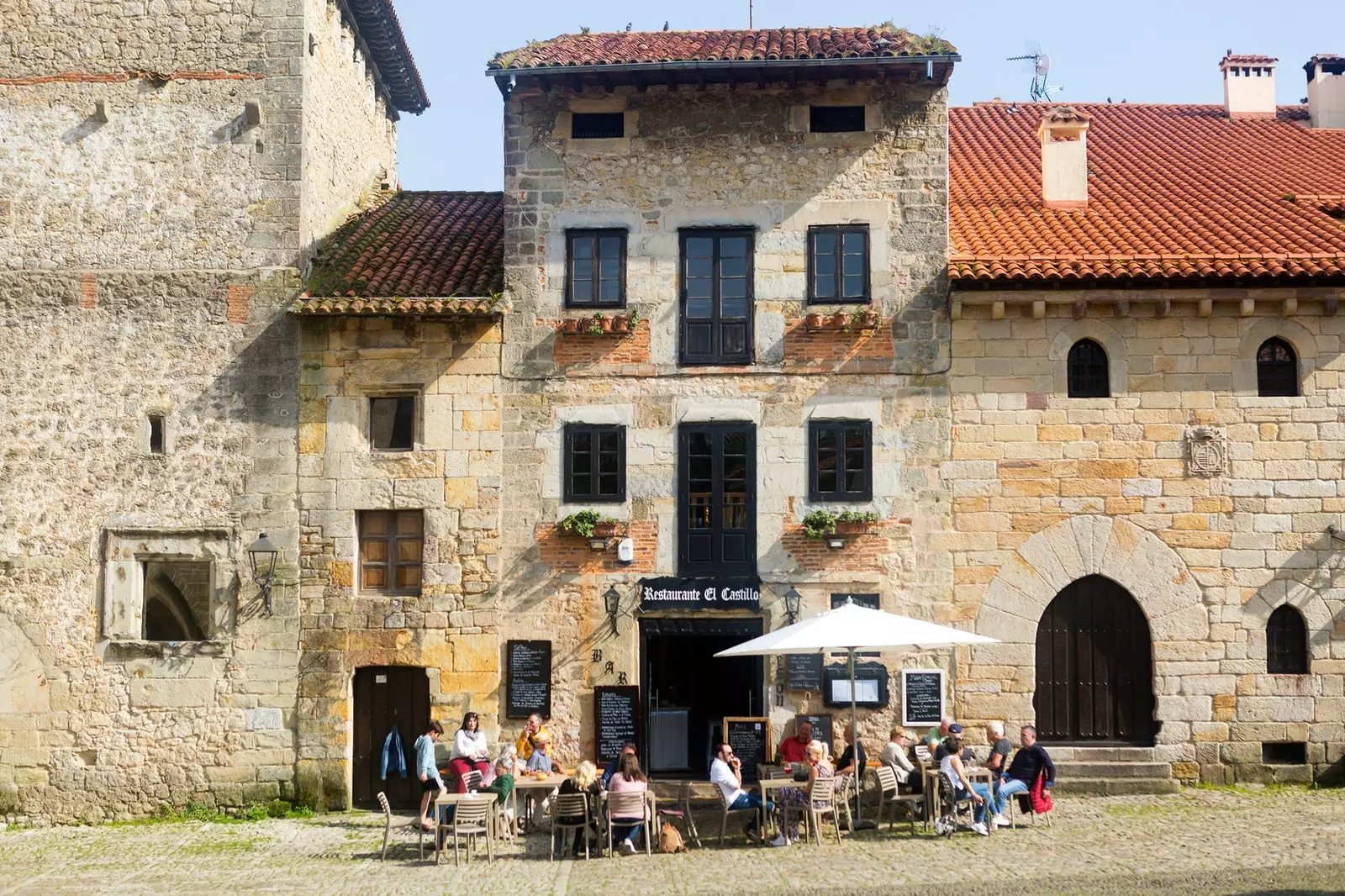
Eating excellently well is a religion in these lands
From the mountain you cannot miss the Mountain stew , flagship of Cantabrian cuisine, which combines the delicacy of the white bean with a compango of everything but low in calories.
The pairing, with Costa de Cantabria wines . And for dessert, let them roll the Cheese from Liebana and the pasiegos.
Staying in Santillana del Mar is quite easy. In addition to the Parador, the town has several hotels with all kinds of services. Of course, this type of destination cries out for rural accommodation, without a doubt.
DID YOU KNOW...
1. Altamira Cave was discovered by chance, and not by a Cantabrian but by an Asturian weaver named Modesto Cubillas . Although we could almost say that the discoverer of the cave entrance was his dog, which was trapped by the weeds that covered the cave entrance and that allowed the discovery.
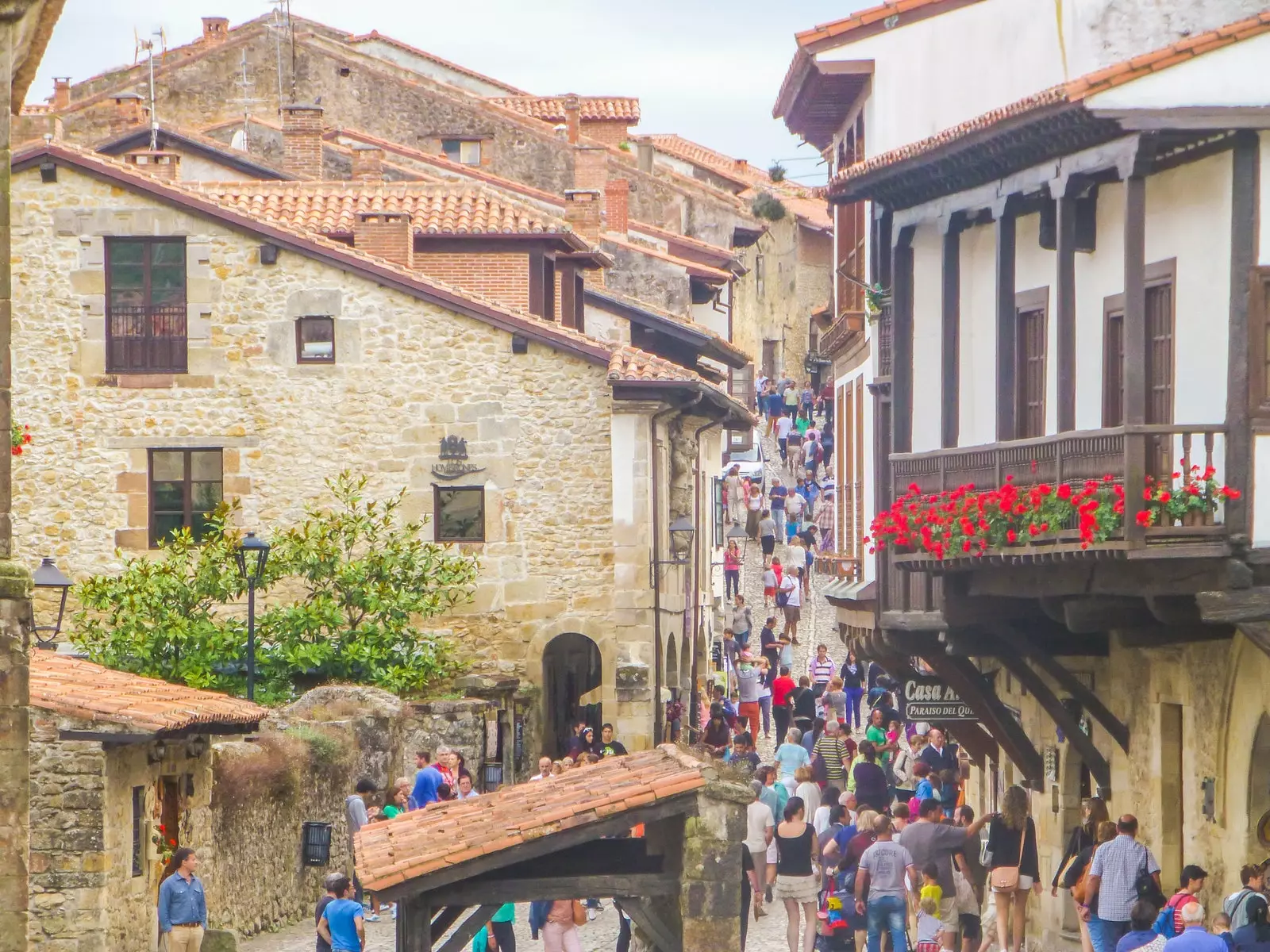
The streets of Santillana del Mar, a delight
two. Santillana del Mar is known as the Villa of the Three Lies because it is said that neither is it holy, nor is it flat, nor does it have a sea.
But the point is that the Collegiate Church of Santa Juliana It is one of the largest religious temples in Cantabria and it houses the relics of a martyr. Not to mention the Regina Coeli Convent, home to the Diocesan Museum, which makes clear the religious influence in the town. The other lie that remains a bit up in the air is that of the sea, since the Santa Justa beach is about 10 minutes away by car. So we should not take the saying too literally.
3. The famous sculptor Jesús Otero was a native of Santillana del Mar . So important is the artist's footprint that he has his own museum in the center of town, a place where part of his work is exhibited.
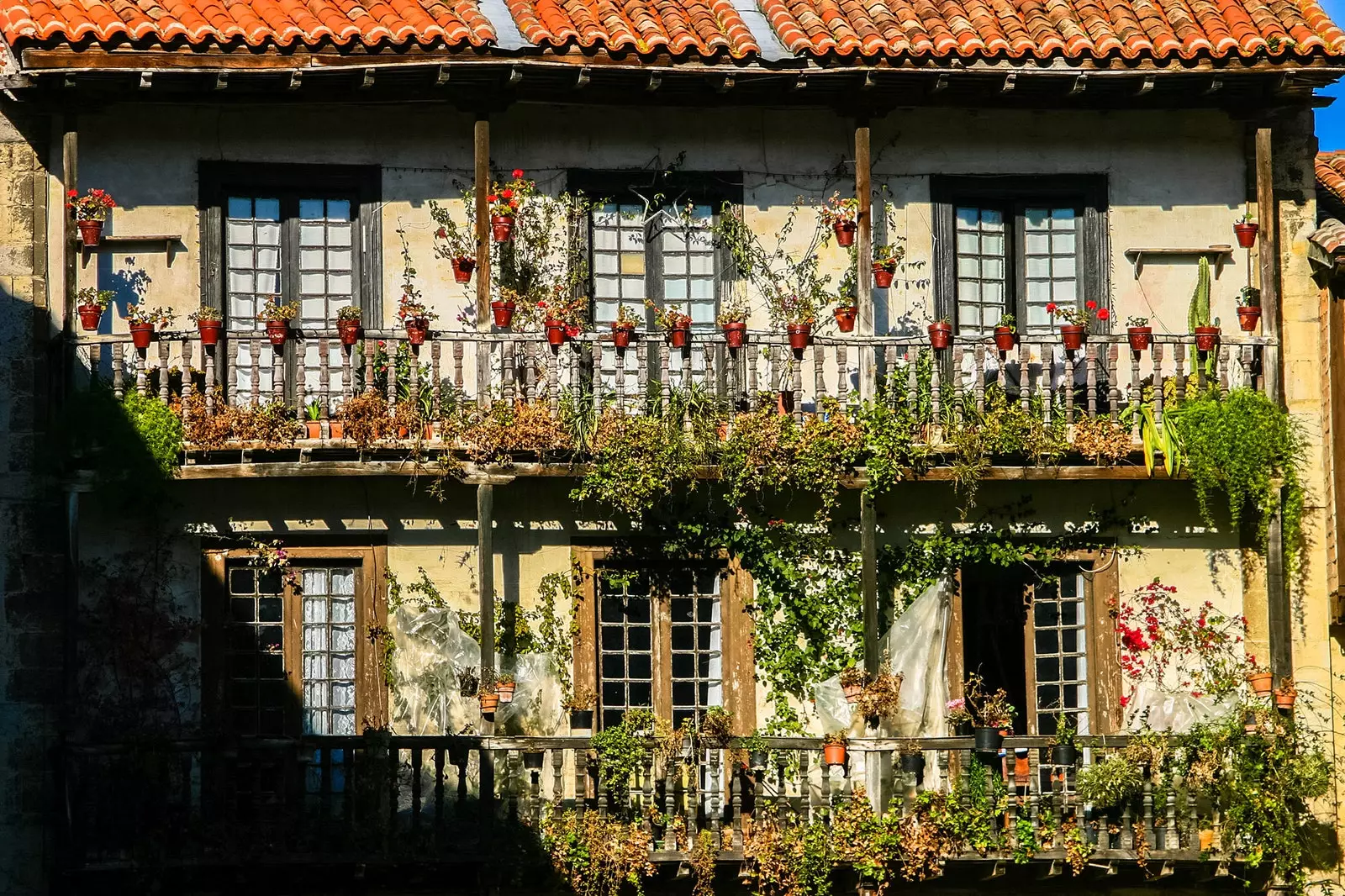
Santillana del Mar, a surprise in every corner
Four. The history of the discovery of the Altamira Cave It was made into a film by Hugh Hudson in 2016 . The cast included leading actors such as Antonio Banderas or Rupert Everett and a soundtrack in which Mark Knopfler himself collaborated.
5. Through Santillana del Mar passes a part of the Camino de Santiago that is considered one of the oldest . It is known that this route already existed in the 12th century, belonging to the pilgrimage known as the Camino del Norte.
6. One of the most disturbing museums in the town of Santillana del Mar is the Museum of Torture . Located near the Collegiate Church, this curious museum is dedicated to taking a tour of the history of torture, with the Spain of the Inquisition having a certain role. From guillotines to an impalement spike and chastity belts to bring us closer to what was once normal.
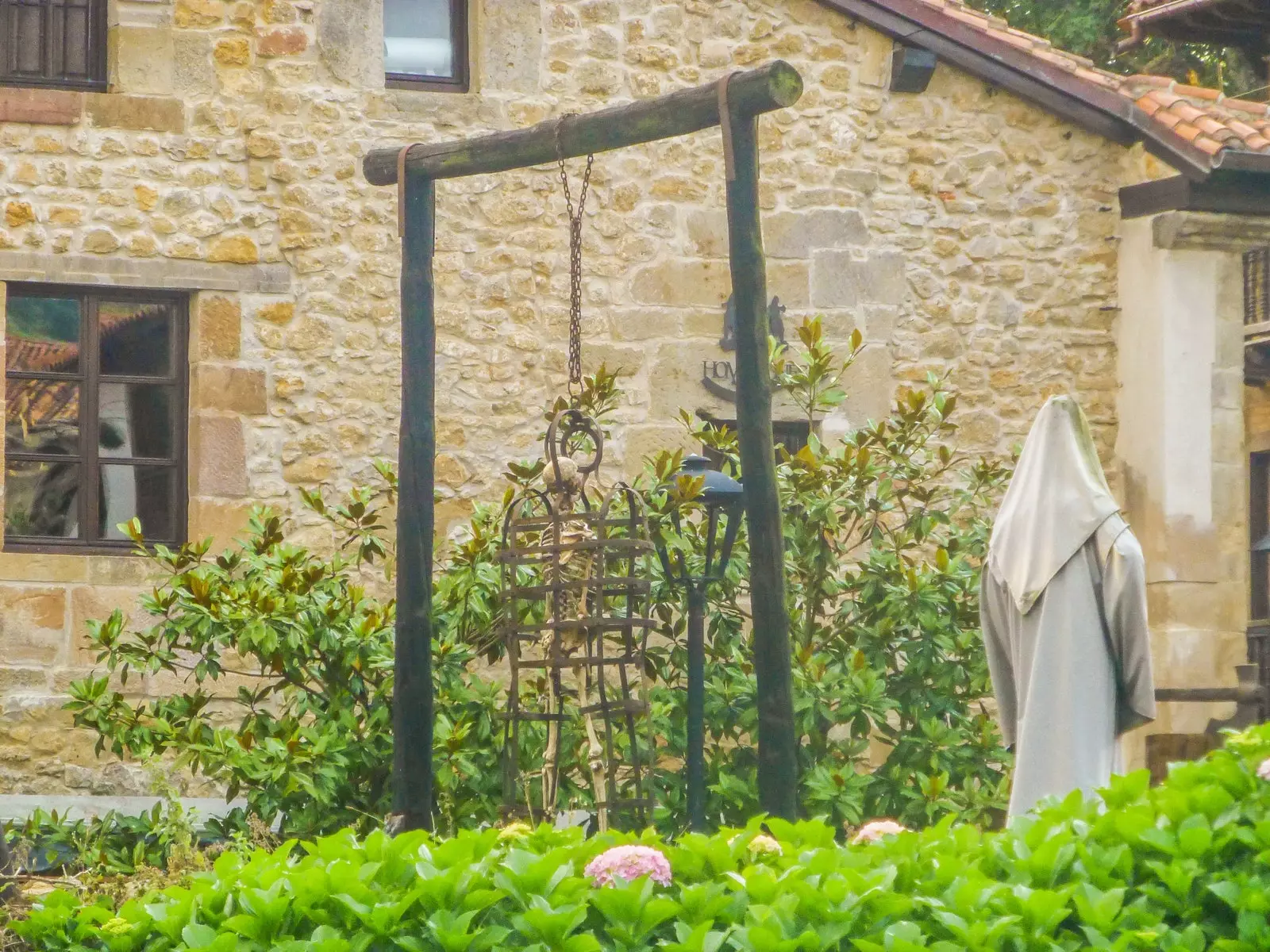
torture museum
